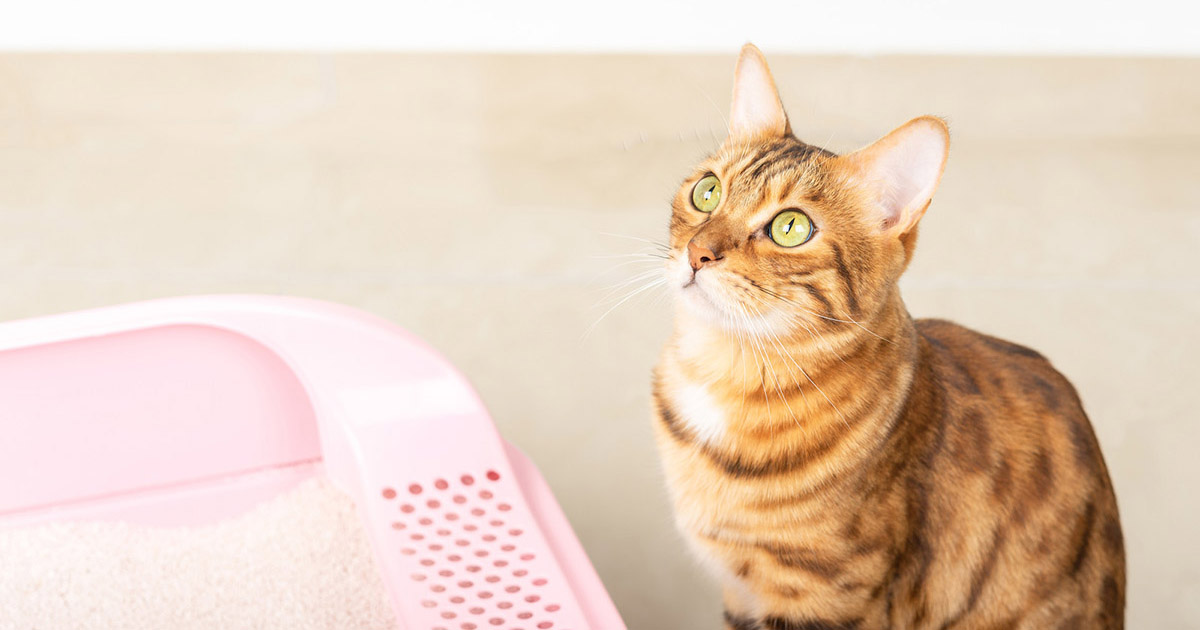Avoid Toilet Disasters: Don't Flush Cat Poop Down Your Toilet - Professional Advice
Avoid Toilet Disasters: Don't Flush Cat Poop Down Your Toilet - Professional Advice
Blog Article
Were you looking for help and advice How to Dispose of Cat Poop and Litter Without Plastic Bags?

Intro
As cat owners, it's essential to be mindful of just how we throw away our feline buddies' waste. While it might appear convenient to purge cat poop down the toilet, this method can have destructive repercussions for both the atmosphere and human wellness.
Environmental Impact
Purging feline poop introduces hazardous virus and parasites right into the supply of water, presenting a considerable threat to marine environments. These contaminants can adversely influence marine life and concession water high quality.
Health Risks
Along with environmental problems, flushing pet cat waste can likewise present health threats to humans. Pet cat feces may have Toxoplasma gondii, a parasite that can cause toxoplasmosis-- a possibly severe disease, especially for expectant women and people with damaged immune systems.
Alternatives to Flushing
The good news is, there are safer and more responsible means to throw away feline poop. Think about the complying with alternatives:
1. Scoop and Dispose in Trash
One of the most typical approach of getting rid of pet cat poop is to scoop it right into a naturally degradable bag and throw it in the garbage. Make sure to use a committed trash inside story and dispose of the waste without delay.
2. Use Biodegradable Litter
Select biodegradable feline litter made from products such as corn or wheat. These trashes are environmentally friendly and can be safely disposed of in the garbage.
3. Bury in the Yard
If you have a lawn, consider burying pet cat waste in a marked area away from veggie gardens and water sources. Make certain to dig deep enough to avoid contamination of groundwater.
4. Install a Pet Waste Disposal System
Purchase a family pet garbage disposal system particularly developed for cat waste. These systems utilize enzymes to break down the waste, decreasing odor and ecological effect.
Final thought
Accountable animal possession extends beyond giving food and shelter-- it likewise involves correct waste administration. By avoiding flushing feline poop down the toilet and going with alternate disposal techniques, we can reduce our ecological footprint and protect human health and wellness.
Why Can’t I Flush Cat Poop?
It Spreads a Parasite
Cats are frequently infected with a parasite called toxoplasma gondii. The parasite causes an infection called toxoplasmosis. It is usually harmless to cats. The parasite only uses cat poop as a host for its eggs. Otherwise, the cat’s immune system usually keeps the infection at low enough levels to maintain its own health. But it does not stop the develop of eggs. These eggs are tiny and surprisingly tough. They may survive for a year before they begin to grow. But that’s the problem.
Our wastewater system is not designed to deal with toxoplasmosis eggs. Instead, most eggs will flush from your toilet into sewers and wastewater management plants. After the sewage is treated for many other harmful things in it, it is typically released into local rivers, lakes, or oceans. Here, the toxoplasmosis eggs can find new hosts, including starfish, crabs, otters, and many other wildlife. For many, this is a significant risk to their health. Toxoplasmosis can also end up infecting water sources that are important for agriculture, which means our deer, pigs, and sheep can get infected too.
Is There Risk to Humans?
There can be a risk to human life from flushing cat poop down the toilet. If you do so, the parasites from your cat’s poop can end up in shellfish, game animals, or livestock. If this meat is then served raw or undercooked, the people who eat it can get sick.
In fact, according to the CDC, 40 million people in the United States are infected with toxoplasma gondii. They get it from exposure to infected seafood, or from some kind of cat poop contamination, like drinking from a stream that is contaminated or touching anything that has come into contact with cat poop. That includes just cleaning a cat litter box.
Most people who get infected with these parasites will not develop any symptoms. However, for pregnant women or for those with compromised immune systems, the parasite can cause severe health problems.
How to Handle Cat Poop
The best way to handle cat poop is actually to clean the box more often. The eggs that the parasite sheds will not become active until one to five days after the cat poops. That means that if you clean daily, you’re much less likely to come into direct contact with infectious eggs.
That said, always dispose of cat poop in the garbage and not down the toilet. Wash your hands before and after you clean the litter box, and bring the bag of poop right outside to your garbage bins.
https://trenchlesssolutionsusa.com/why-cant-i-flush-cat-poop/

Do you appreciate reading about Can You Flush Cat Poo or Litter Down the Toilet?? Write a review directly below. We will be delighted to find out your feelings about this posting. Hoping to see you back again soon. Do you know about someone else who is looking into the topic? Do not hesitate to share it. I recognize the value of reading our article about Can You Flush Cat Poo or Litter Down the Toilet?.
Set An Appointment Report this page